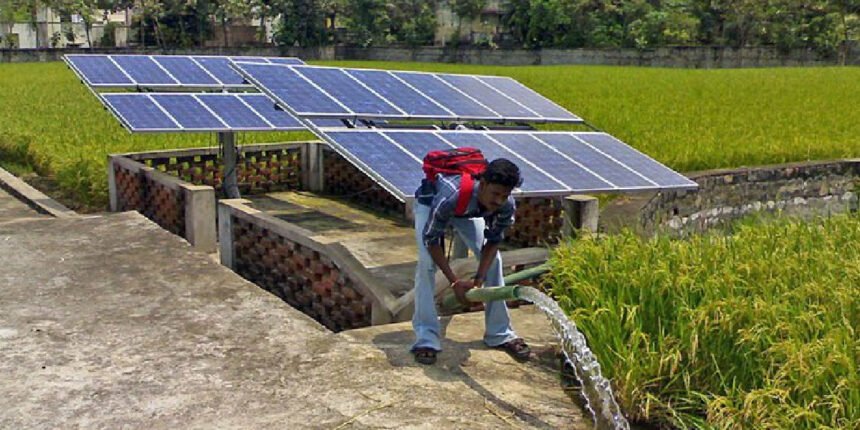Introduction to Solar Panels TEAS Passage
The term “solar panels TEAS passage” holds a unique dual significance that makes it essential for two very different yet equally important audiences. On one hand, it refers to a passage often included in the Test of Essential Academic Skills (TEAS) — a standardized exam used by nursing and healthcare programs to assess a student’s readiness for rigorous medical coursework.
On the other hand, “solar panels teas passage” also refers to the innovative and growing use of solar panels in tea farming, especially through agrivoltaics, where clean energy systems are integrated into tea plantations. This dual meaning makes the topic both educational and practical.
TEAS test takers are expected to interpret complex texts that include scientific concepts and environmental data. Simultaneously, farmers and sustainability advocates view solar panels as a viable solution to energy challenges in agriculture.
The goal of this article is to explore both aspects: how students can master the solar panels TEAS passage in exams and how the real-world application of solar energy in tea farming is revolutionizing agriculture, offering economic, environmental, and operational benefits.
What Is the Solar Panel TEAS Passage in the TEAS Exam?
The TEAS exam, short for Test of Essential Academic Skills, is widely used across the United States to assess students applying to nursing and allied health programs. Administered by ATI (Assessment Technologies Institute), the TEAS exam measures proficiency in reading, math, science, and English. One common type of passage in the reading or science sections is the “solar panels” passage. This passage includes technical information about how solar panels work, energy efficiency, and their environmental impact.
Students are often asked to interpret data charts, analyze cause-and-effect relationships, understand technical terms, and answer comprehension questions based on the passage. It is designed to test how well a student can handle scientific literature, apply logic, and synthesize technical information — all essential skills in healthcare. Because the content is environmentally themed and science-rich, it also prepares students to engage with sustainability issues that are increasingly relevant in medical and public health careers.
Reading Strategy for Solar Panel TEAS Passage
Reading the solar panels TEAS passage effectively requires a structured and strategic approach. The best method begins before actual reading. Students should start by skimming the passage layout, paying attention to headings, bold terms, diagrams, and data tables. During the reading phase, it’s crucial to underline or note the main ideas, particularly those that define how solar panels function, what makes them efficient or inefficient, and how they impact the environment. Highlighting transition words like “however,” “in contrast,” or “as a result” helps identify shifts in logic or comparisons.
When it comes to answering questions, students must understand the common formats: identifying the main idea, recognizing supporting details, interpreting vocabulary in context, and analyzing presented data. Avoiding distractors is key — many wrong answers seem plausible but are slightly off from the passage’s actual message. Managing time is another important strategy; students should aim to spend one minute skimming, three minutes reading deeply, and the remaining time on question analysis and answer confirmation.
Scientific and Technical Concepts in Solar Panel TEAS Passage
The solar panels TEAS passage introduces test takers to core scientific concepts such as the photovoltaic effect, which is the process by which solar panels convert sunlight into electricity. These panels are composed of silicon cells that absorb sunlight and release electrons, creating an electric current. The passage typically explains how these photovoltaic (PV) systems work, from light capture to electrical conversion.
It may also cover variables that affect efficiency, like sunlight angle, dust accumulation, or cell temperature. Students must understand measurements such as watts (power), kilowatt-hours (energy), and percent efficiency. Environmental topics also arise frequently, including the role of solar panels in reducing carbon footprints, lowering greenhouse gas emissions, and promoting sustainability. These technical discussions are not just relevant for passing a test — they align with broader concerns in healthcare and policy, where energy choices affect air quality, public health, and long-term ecological balance.
Real-World Meaning – Solar Panels in Tea Farming (Agrivoltaics)
Outside the classroom and exam setting, the term “solar panels teas passage” takes on a groundbreaking real-world application in the form of agrivoltaics. Agrivoltaics involves the dual use of land for both agriculture and solar energy generation. In the context of tea farming, this means installing solar panels above or around tea plants to generate electricity while providing beneficial shade to crops.
This system is especially relevant in regions where climate change has led to excessive heat and irregular rainfall. Tea plants (Camellia sinensis) are sensitive to extreme weather, and solar panels help create a microclimate that conserves water and protects leaves from sun damage. At the same time, the electricity produced can be used to power irrigation systems, tea processing units, and storage facilities. Thus, the “solar panels teas passage” is more than an academic exercise—it’s an evolving agricultural innovation with the potential to change how we grow one of the world’s most beloved crops.
Benefits of Solar Panels in Tea Farming
Installing solar panels in tea farming brings a host of practical and measurable benefits. First, the panels provide climate resilience by moderating temperature and reducing evaporation, which in turn enhances the quality and consistency of tea leaves. Second, they enable energy independence, allowing tea farms to run essential operations like processing, storage, and irrigation without relying on unreliable or expensive grid power. Third, there are clear economic gains.
Farmers can either use the solar energy directly, lowering their electricity bills, or sell the surplus back to the grid for profit. This leads to a faster return on investment and improves long-term profitability. Fourth, the panels support environmental goals by reducing carbon emissions, decreasing diesel usage, and fostering biodiversity. Partial shading supports a balanced ecosystem, benefiting pollinators and soil organisms. Overall, solar panels create a more efficient, sustainable, and resilient farming model that not only preserves resources but also supports income stability for farmers.
Case Studies: Solar Energy in Tea Farming
Several successful case studies from around the world illustrate the impact of solar panels in tea farming. In Japan, companies like TEA ENERGY Corporation have adopted agrivoltaics in tea farms located in Shizuoka and Kagoshima. These projects, supported by the Japanese Ministry of Agriculture, have improved crop quality and helped meet sustainability goals. In Kenya, the Kenya Tea Development Agency (KTDA) installed a 275 kW solar system at the Gachege Tea Factory, slashing electricity bills by 50% and saving over $60,000 annually.
Another Kenyan factory, Kipkebe, saved nearly 10 million shillings through a solar initiative that powers both irrigation and processing. In India, tea estates in Assam like Kalinagar and Rosekandy have invested in rooftop photovoltaic systems, cutting diesel use by 40% and saving lakhs in energy expenses. These case studies confirm that solar integration is not only technically feasible but also economically and environmentally impactful across different geographies.
Challenges and Solutions in Solar Panel Teas Passage
Despite the many benefits, adopting solar panels in tea farming comes with challenges. High initial costs can be a barrier, especially for smallholders. However, government subsidies, grants, and third-party financing options like leasing programs can help mitigate these expenses. Another challenge is shading and panel placement. Tea requires a specific amount of sunlight, so panel orientation must be carefully designed to avoid harming crops. Modern solutions include using bifacial panels or vertical setups that allow filtered light.
Maintenance is also critical—dust and moisture can reduce panel efficiency, so regular cleaning and technical checks are necessary. Moreover, many farmers face land use conflicts or zoning regulations that don’t yet recognize dual-purpose agriculture. Advocating for updated agricultural policies and raising awareness about agrivoltaic benefits can help resolve this. Overall, with the right planning, education, and support systems, these challenges can be effectively overcome.
TEAS Exam and Real-World Application Connection
Understanding the solar panels TEAS passage offers a valuable intersection between academic testing and real-world knowledge. For TEAS test takers—many of whom are future nurses or healthcare professionals—reading about solar panels sharpens critical thinking, improves data interpretation, and builds scientific literacy. These skills are directly applicable in fields like hospital administration, where energy efficiency and sustainability are growing concerns. At the same time, the passage gives insight into environmental issues that impact public health, such as air pollution, climate change, and access to clean energy. Learning how to analyze a technical passage prepares students not just to pass a test, but to engage meaningfully with global issues that intersect with healthcare, agriculture, and sustainability.
Preparation Tips for Students
Success in the solar panels TEAS passage requires both knowledge and strategy. Students should practice reading scientific texts, particularly those related to energy, agriculture, and environmental science. Learning technical terms like photovoltaic, kilowatt-hour, carbon footprint, and efficiency rate can make complex passages easier to understand. Using visual aids like diagrams and charts can enhance comprehension and retention.
Simulating actual test conditions is another useful method—set a timer for 7–8 minutes and try reading a sample passage followed by multiple-choice questions. This helps build speed, accuracy, and confidence. TEAS prep books and online tools like BigWriteHook and ATI’s study platform offer interactive resources for mastering such passages. Consistent practice with feedback is the best way to improve performance on this crucial section.
Future of Solar Panel Technology in Tea Farming
The future of solar panels in tea farming is incredibly promising, driven by advancements in technology and global commitment to sustainability. Smart solar panels equipped with AI and IoT sensors can adjust angles to maximize sunlight absorption and track energy output in real time. Agrivoltaics is expanding beyond large estates to smallholder farms and urban rooftops, making clean energy accessible to more communities.
The goal is to meet dual sustainability objectives: produce more food while generating clean power. Projects are already emerging that combine solar, wind, and battery storage to provide full off-grid capability. This makes tea production more resilient to climate change and economic shifts. As government policies become more favorable and technology becomes more affordable, the adoption of solar panels in tea farming will only accelerate, shaping the future of sustainable agriculture worldwide.
Conclusion
The “solar panels TEAS passage” is more than just a segment on a standardized test—it’s a gateway to understanding one of the most important shifts in modern agriculture and education. For students, it challenges comprehension and teaches analytical skills crucial in healthcare. For farmers, it presents a powerful opportunity to reduce costs, conserve resources, and produce tea more sustainably through agrivoltaics.
As we move toward a future where clean energy and food security are paramount, the integration of solar panels into tea farming serves as a compelling example of how technology, science, and environmental consciousness can work together. Whether you are preparing for the TEAS exam or planning the future of your tea estate, understanding the power of the solar panels TEAS passage is a step toward a smarter, greener, and more resilient world.
FAQs About Solar Panels TEAS Passage
Q1: What is the solar panels TEAS passage?
A: The solar panels TEAS passage is a reading or science section on the TEAS exam that includes information about how solar panels work, their benefits, and their role in sustainability. It tests your understanding of scientific facts, technical vocabulary, and data interpretation.
Q2: How do I answer questions in the solar panels TEAS passage?
A: Start by quickly skimming the passage to find key terms and main ideas. Focus on cause-effect relationships, definitions, and data. Read each question carefully and use the passage to find direct answers without guessing.
Q3: What topics are covered in the solar panels TEAS passage?
A: Topics usually include how solar panels convert sunlight into energy, their efficiency, environmental benefits, and sometimes real-world examples like greenhouse farming or tea plantations using solar power.
Q4: Why is the solar panels TEAS passage important?
A: It helps test your ability to read and understand technical science texts, which is important for careers in healthcare. It also teaches real-world concepts about renewable energy and environmental awareness.
Q5: How can I prepare for the solar panels TEAS passage?
A: Practice reading science articles, learn key solar energy terms, and take sample TEAS passages. Focus on reading diagrams, understanding efficiency, and recognizing main ideas quickly.
For More Information Visit Fourmagazine







